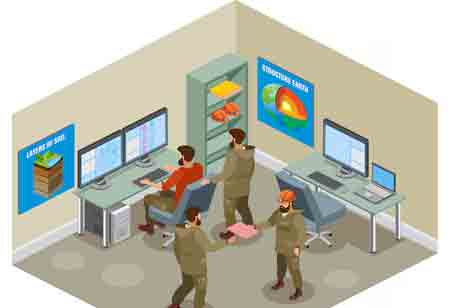THANK YOU FOR SUBSCRIBING
Be first to read the latest tech news, Industry Leader's Insights, and CIO interviews of medium and large enterprises exclusively from Gov CIO Outlook
THANK YOU FOR SUBSCRIBING

By
Government CIO Outlook | Friday, August 15, 2025
Stay ahead of the industry with exclusive feature stories on the top companies, expert insights and the latest news delivered straight to your inbox. Subscribe today.
Fremont, CA: Advancements in technology are enhancing emergency response systems, allowing them to operate more quickly, efficiently, and effectively in critical situations. Innovations such as artificial intelligence (AI), drones, the Internet of Things (IoT), and mobile apps are essential for developing a safer and more agile society.
AI is fundamentally transforming emergency response through accelerated, data-informed decision-making processes. Advanced algorithms can process extensive streams of real-time data, encompassing meteorological patterns, traffic analytics, and emergency calls, thereby facilitating the prioritization of resources according to urgency levels.
AI systems can predict the potential severity of incidents and recommend optimal travel routes for first responders, effectively reducing response times and optimizing resource allocation. For instance, AI-driven predictive modeling can anticipate the trajectories of wildfires or floods, enabling preemptive evacuations of at-risk populations.
Drones are increasingly recognized as indispensable assets within emergency response frameworks. They provide critical real-time aerial reconnaissance of disaster-affected areas, significantly enhancing situational awareness and operational efficiency. Drones with high-resolution imagery and advanced sensors enable responders to conduct aerial assessments and identify hazardous zones, collapsed infrastructure, and areas requiring immediate assistance. This capability streamlines the assessment process and facilitates the timely distribution of vital supplies, ultimately improving overall response efficacy.
In natural disasters, such as hurricanes and earthquakes, unmanned aerial vehicles (UAVs) demonstrate critical capabilities by accessing hard-to-reach locations, thereby facilitating the rapid assessment of damages. These drones can also perform vital logistics operations, delivering medical supplies, food, or potable water to stranded populations, effectively mitigating the impact of disruption to conventional transportation networks.
The Internet of Things (IoT) constitutes a sophisticated ecosystem of interconnected devices exchanging real-time data. IoT infrastructure can significantly augment situational awareness and operational response in crisis scenarios. For instance, strategically deployed smart sensors on critical infrastructure, such as bridges, roads, and buildings, can monitor structural integrity and detect potential hazards, providing timely alerts to stakeholders and enabling proactive risk management to avert catastrophic failures.
In healthcare, wearable IoT devices can monitor vital signs and send alerts if a person encounters a medical emergency. This early warning system can help medical teams prepare in advance, reducing response times and improving the chances of survival.
Mobile applications are another vital tool in modern emergency response systems. Mobile apps allow authorities to communicate directly with the public, providing real-time updates on evacuations, road closures, and safety protocols. Emergency apps often feature a two-way communication system, allowing citizens to report incidents or request help. For example, the app can enable individuals to send their location and details of the emergency to authorities, ensuring quicker and more accurate responses.
I agree We use cookies on this website to enhance your user experience. By clicking any link on this page you are giving your consent for us to set cookies. More info



